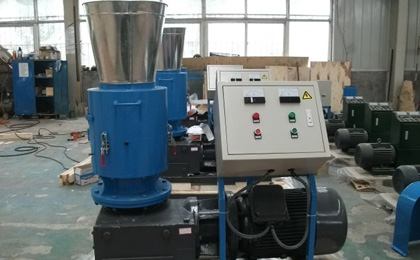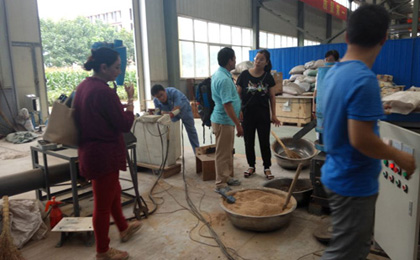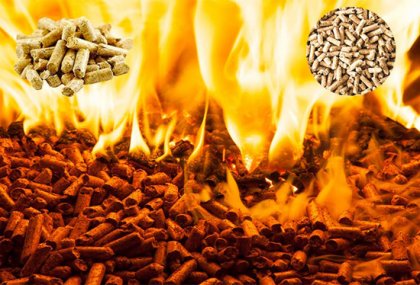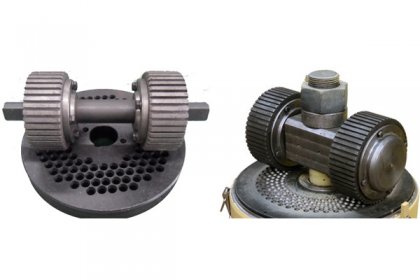Biomass pellet fuel is an environmentally friendly fuel produced by the compression of biomass pellet machine. Durability is an important performance index for evaluating the quality of biomass pellet fuel. It generally includes the crush resistance, deformation resistance and water resistance of biomass pellet fuel. And several indicators such as anti-hygroscopicity.
Durability
The durability of biomass pellet fuels affects the packaging, transportation and storage properties of it. At present, there is no uniform standard for testing methods and evaluation indexes for the water resistance of biomass pellet fuels. The sampling test can be used to determine whether the durability of the biomass pellet fuel meets the packaging, transportation and storage performance requirements.
In this test, referring to the method commonly used by current researchers, the shaped fuel sample is placed at a water surface T25 mm of 27 ° C, and the form of the shaped fuel is continuously observed until the molding fuel is completely peeled off and decomposed, so that the molding fuel remains in a complete form in water. As a technical index for evaluating the water resistance of the molding fuel, each sample was recorded 5 times and averaged.
Anti-crushing
The anti-crushing property mainly reflects the ability of biomass pellet fuel to withstand certain drop and roll collisions during handling, reflecting the transportation requirements of biomass-forming fuel under actual conditions. During the transportation or movement of biomass pellet fuel, a certain weight will be lost due to the drop. The remaining mass percentage after the falling of the molding fuel (that is, the difference between the total mass and the loss amount divided by the total mass) reflects the anti-crushing ability of the product. The test for the crush resistance of the formed fuel is carried out with reference to the method for determining the crushing strength of coal. The fuel rod having a length of 60 to 100 mm is freely dropped from a height of 2 m onto a hard floor, and then the fuel of the fallen fuel rod is larger than 25 mm. The rod fell again and fell a total of three times. The fuel rods larger than 25 mm after crushing accounted for the mass percentage of the original fuel rod, indicating the crushing strength of the fuel rod.

Resistance to deformation
The anti-deformation mainly reflects the ability of the biomass forming fuel to resist cracking under the action of external pressure, and determines the use and stacking requirements of the biomass forming fuel.
Biomass forming fuels are subjected to a certain amount of pressure during stacking, and the capacity of the biomass is reflected by the ability of the biomass forming fuel to resist deformation. The maximum pressure deformation of a biomass-formed fuel sample under continuous loading and stress. Each sample was recorded 5 times and the maximum value was taken.
Water resistance, moisture absorption
The water resistance and moisture absorption reflect the water permeability of the biomass forming fuel and the ability to absorb moisture in the air, respectively, and the percentage of weight gain reflects the resistance to moisture absorption. The storage performance of biomass forming fuel is determined.
The test method is to place the molding fuel in a closed environment with a relative humidity of 100% and observe its mass change. In the preliminary test, it has excellent deformation resistance and moisture absorption resistance for a molding fuel having a good relaxation density. When the molding fuel was piled up to a height of about 2.5 meters, the molding fuel at the bottom did not deform, and the test on the mechanical property testing machine found that it has a strong resistance to deformation. For moisture absorption resistance, the preliminary test method is to place the molding fuel in a closed environment with a relative humidity of 100%, and observe and measure once a day.
"Biomass molding fuel" has a high calorific value and is far lower than petroleum energy. It is a clean energy source that is strongly advocated by the state and has a broad market space.






